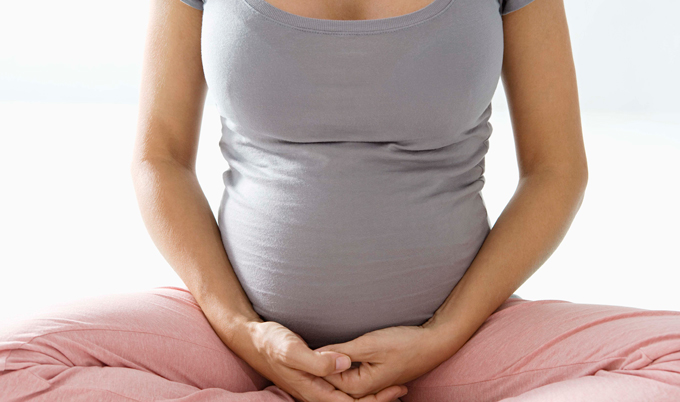immune system modified in pregnancy
Maternal immune system is modified in early pregnancy
Published on: 14 November 2018
The first Human Cell Atlas study of early pregnancy in humans has shown how the function of the maternal immune system is affected by cells from the developing placenta.
Researchers from the Wellcome Sanger Institute, Newcastle University and University of Cambridge used genomics and bioinformatics approaches to map over 70,000 single cells at the junction of the uterus and placenta. This revealed how the cells talk to each other to modify the immune response and enable the pregnancy.
Published in Nature, this work presents new and unexpected cell states in the uterus and placenta, and shows which genes are switched on in each cell. Insights from this will help us to understand what leads to a successful pregnancy, and what can go wrong during miscarriages or pre-eclampsia.
Maintaining a healthy pregnancy can be difficult sometimes, with many women suffering from miscarriages or still birth, and others having problems such as pre-eclampsia. The roots of many of these problems occur in the first few weeks of the pregnancy, when the placenta is formed.
The fetus creates a placenta that surrounds it in the uterus to provide nutrients and oxygen. This is in contact with the mother where it implants into the lining of the uterus - known as the decidua - to create a good blood supply for the placenta. Research on the interface between mother and fetus could help answer many vital questions, including how the mother’s immune system is modified to allow both mother and the developing fetus to coexist. However, until now this area has not been well studied.
To understand this area, researchers studied more than 70,000 single cells from first trimester pregnancies. Using single-cell RNA and DNA sequencing they identified maternal and fetal cells in the decidua and placenta, and found how these cells were interacting with one another. They discovered that the fetal and maternal cells were using signals to talk to each other, and this conversation enabled the maternal immune system to support fetal growth.

The fetal cells from the placenta communicate with the mother’s immune cells
Dr Roser Vento-Tormo, a first author on the paper from the Wellcome Sanger Institute, said: “For the first time ever, we have been able to see which genes are active in each cell in the decidua and the placenta, and have discovered which of these could modify the maternal immune system. The fetal cells from the placenta communicate with the mother’s immune cells to ensure the placenta implants correctly. This allows the fetus to grow and develop normally.”
Using microscopy-based methods the researchers were also able to pinpoint the location of new cell states in the different layers of the decidua. They saw how the biological blocks of the placenta – called trophoblast cells – invade into the lining of the mother’s uterus and cause the tissue to change structure, creating the blood supply for the developing fetus.
Professor Muzlifah Haniffa, a corresponding author from Newcastle University, said: “This study was only possible due to the Human Developmental Biology Resource, which provides tissues to enable research into understanding human development to help improve health. Our single cell study has shown us the exact cellular composition of the decidua and placenta for the first time, and how the cells from the developing placenta and uterus communicate. This has huge implications for understanding what happens in a normal pregnancy, and for studying what can go wrong during conditions such as pre-eclampsia and miscarriage.”
Prof Ashley Moffett, a corresponding author from Cambridge University, said: “The formation of the decidua is vital for a successful pregnancy and our study has revealed completely new subtypes of cells within the decidua. Further clarification of what each of these cells do will help to understand how the maternal immune response helps achieve a successful pregnancy.”
Understanding this area also has implications for the study of cancers. Tumour cells can use similar mechanisms to evade the immune system and extract new blood supply to provide nutrients and oxygen for tumour growth.
Dr Sarah Teichmann, a corresponding author on the paper from the Wellcome Sanger Institute and co-chair of the Human Cell Atlas initiative Organising Committee, said: “This first Human Cell Atlas of early pregnancy gives us a reference map of this vital initial phase of development. It will transform our understanding of healthy development, and is helping us understand how the placental and maternal cells communicate with each other to support pregnancy. This will shed light on disorders of pregnancy, and could also help understand pathways that cancer cells exploit.”



